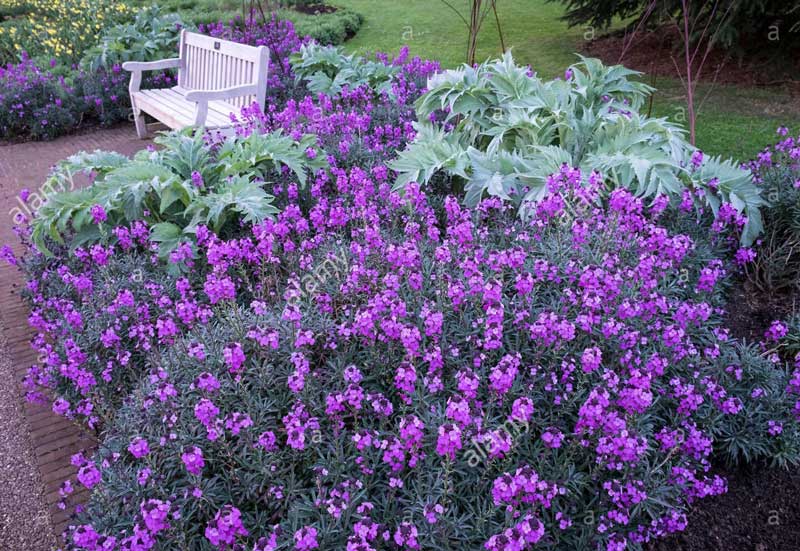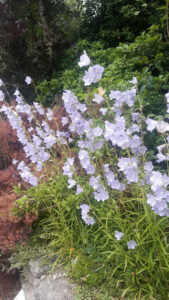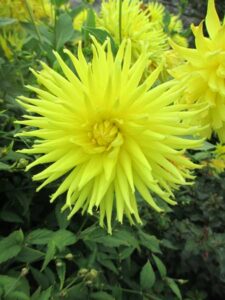BOWLES MAUVE, A WINTER WINNER
The longest and severest of winters eventually come to an end. Spring arrives, (reluctantly most years) but it holds the promise of increased temperatures, coupled to glorious new light, and joyous hope. Signs are slow to manifest themselves, but be assured they’re on the way. Occasional ‘pet’ days will dawn to lift our spirits with a medley of colour and perfume, released from early shrubs and emerging perennials. These are more vital than ever, for in these depressing, pinched, penury-stricken days, many believe that spring has nothing to offer, and that it’s certainly not ‘just around the corner’.
For those without a home, without enough finance to live what we here in Cork call a ‘normal’ life, the cold is enduring, life remains stagnant, and no birds sing in the gardens of their mind. However, a whiff of an evocative flower fragrance, can often raise their spirits and bring about hope for better times ahead. No wonder aromatherapy has gained such favour in today’s busy world!
In reality we cannot have every fragrant plant growing in our gardens, but there are a few hardy kinds worth sourcing. One in particular which I wish to promote today is the old-fashioned biennial wallflower and its longer lasting relations. Biennial wallflowers were (and still are) raised from seed and sold under the name Erysimum. The best variety, the most floriferous and longest lived, is that sold as Erysimum ‘Bowles Mauve’ named after E.A. Bowles owner of Myddleton House near Enfield in the UK.
This grey-leafed bushy wallflower, packed with violet flower spikes (see illustration) loves to live its entire life of four to five years in light, sun-drenched soil which drains easily in winter. During all of this time it will produce a non-stop succession of flowering spikes (which do not set seed) so if you have room for only one plant this is the one to choose. Noted for its nine month flowering, my own plant of evergreen ‘Bowles Mauve’ has been in full bud and partial bloom since early December, despite the wind, wet, and cold. As I write (it’s still freezing cold) the promise of ‘best is yet to come’ is very evident.
Left to its own devices, this garden-worthy wallflower would in time become woody and leggy but the way to extend its lifespan and keep it short-joined and bushy is to cut it back hard towards mid-summer. By August, it will have recovered and go on to flowering size before autumn grows old. An established plant will measure as much as thirty inches across with a similar height. Cheap as plants go, this variety is normally easily sourced and most garden outlets will have stock on the benches. Add sharp grit to heavy soil before planting and choose as sunny a spot as possible. Totally hardy, this plant is reliable, and easy to manage. Try a plant in a pot on the balcony or terrace and be delighted all year
WELCOME SPRING
On the first day of next month (February) we celebrate La Feile Brid, and enter the season of compensation. It reminds us (gardeners in particular) that life, and new growth as it returns, was really worth the wait! The harbingers are already in bloom. The most delicious of them all is still my all-time favourite Daphne Jacqueline Postil! I don’t wish to keep on repeating myself about the delights that this magnificently scented evergreen brings to dripping nostrils in the half light of winter but I must repeat it!
When you consider that there will be moments (perhaps only one or two during the year) when your nostrils will once again flood with a glorious perfume, the experiences must not be allowed to pass unrecorded. I know that in the depth and bareness and squalor of January, it is sometimes hard to imagine that things will ever be different, but Jacqueline Postil, as a frontrunner, proves they will. Surely, it is showing in a garden or arboretum near to you, so keep looking and following your nose.
THERE ARE THOSE…..
There are those who garden irrespective of atrocious conditions, and those that play safe. The horny-handed and keen are familiar with the joys of a frosty morning stung to silence, and the hushed tone of a cold foggy afternoon. Instead of moving outside they value the idiom ‘it can always be done tomorrow’. The careless however will crouch against the wind, and shelter from biting hail rather than go inside before their appointed time. Their war cry is hope, things will surely improve. They insist on being part of the ever-changing scene, the observance day after day of the arrival of all of winter’s wonder. Into which bracket do you fall?
THE JANUARY GARDEN
Shrubby dogwoods, grown for their colourful winter twigs, can be cut now and used as material for propagation. Begin now. It’s so easy and it costs absolutely nothing. The material should be cut below a leaf joint, and then inserted into the soil where it can be left undisturbed until autumn. Alternatively, you can pull suckers from the base of an established plant and either pot them up or simply plant out. I am not asking readers to go out and remove pieces of cornus from the side of our major roadways (where they are grown in their millions) but you may be able to beg a bit here or there! There are many around this area and I admire them both up around Fernwood and out beyond Grandons.
THE DEVIL’S COACH-HORSE
The glasshouse is more or less out of bounds during the months of December and January but soon, I will be returning to its confines. Wildlife exists there all year round and in among the stacked clay pots and along the mottled wall, pest eating spiders find a perfect winter hide-away. Here too, the nimble black beetle commonly called the devil’s coach-horse lives and waits for a re-awakening of slugs and leatherjackets. He has a voracious appetite for both. His work is valuable, so I let him be in his cosy hideaway.








